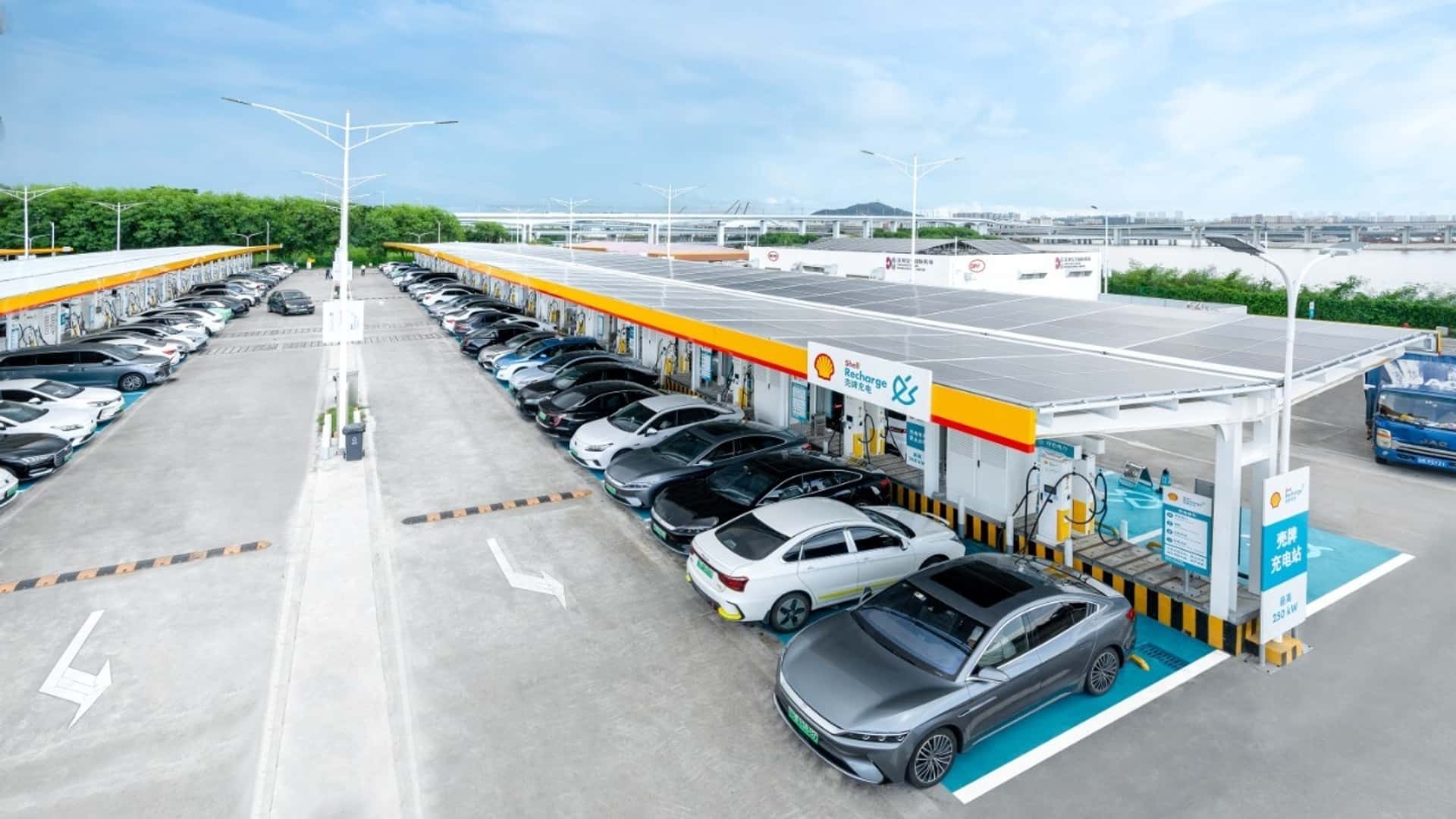
China keeps hitting back-to-back home runs when it comes to electric vehicles and charging infrastructure. Fresh news out of Shenzen, China’s third largest city by urban population after Shanghai and Beijing, states that the number of ultra-fast DC chargers in the city now exceeds the number of gas stations. It’s a milestone for the world’s largest passenger vehicle and EV market.
Chinese media reports, citing data from the local development and reform commissions, said that the city now has 362 supercharging stations for new energy vehicles (NEVs), surpassing the number of gas stations. Shenzen saw a surge in NEV charging, reaching 670 million kilowatt-hours, a 10.9% year-over-year rise, according to the Shenzhen Power Supply Bureau of China Southern Power Grid.
China attempts to support its massive EV customer base.
China is by far the largest passenger vehicle market in the world, and also the world’s largest electric vehicle market. However, building a network of fast chargers has been anything but smooth. Local reports suggest that the expansion of China’s charging network has been sluggish. But one city has shown how it can be done: Shenzen.
According to the State Council of the People’s Republic of China, the southeastern Guangdong Province, where Shenzen is located, launched an initiative to create a “city of superchargers.” The initiative aimed at supporting the expanding fleet of NEVs in the city, which surpassed 970,000 units in December 2023, constituting approximately 60% of the local market.
That effort seems to be shaping up nicely. One of the largest charging stations in Shenzen is located at the Shenzen Airport Terminal. It features 258 fast charging points. A joint venture between multinational oil giant Shell and BYD operates it. This location opened in September 2023 and Shell said the turnout has been overwhelming, with thousands of EV drivers using it daily.
BYD’s headquarters is also located in Shenzen. As China infused billions of dollars to grow its EV industry, BYD was the largest beneficiary of the government’s support schemes. It reportedly received some $3.7 billion in direct aid between 2018 and 2022. To support these EV sales, local charging infrastructure is now picking up pace after initially being sluggish.
Tesla also has a robust charging network in China, with over 1800 Supercharging stations offering over 11,000 dispensers. Hundreds of these locations are also open to non-Tesla EVs. However, as a part of its 20% global workforce reduction that has resulted in brutal layoffs, most of Tesla’s China Supercharger team seems to have been disbanded, according to at least one unverified post on X from a Tesla blogger.
This tracks with concerns voiced by laid-off Tesla employees here in the U.S., who told InsideEVs that they were worried about the quality, reliability and uptime of the Superchargers after most of the team was dismissed last week.
If CEO Elon Musk decides to slow the expansion of Superchargers in China, as he has in North America, rival companies might step up and fill the gaps. After its recent foray into EVs, consumer electronics giant Huawei has started rolling out DC fast chargers in the country. Some of those can dispense electrons at a whopping 600 kilowatts. Xpeng and Nio also have their proprietary chargers, as do dedicated energy companies like Electrly, Tgood, and StarCharge, among others.



